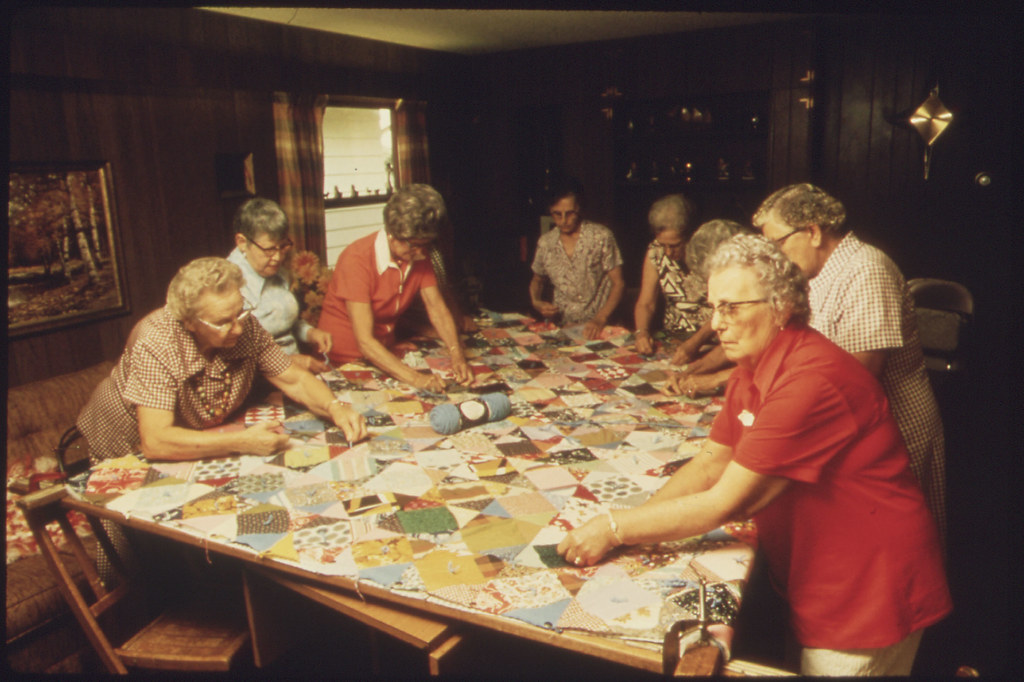On the way to 100 years of Flickr
A report on archival strategiesBy Ashley Kelleher Skjøtt

from US National Archives
Flickr is an important piece of social history that pioneered user-driven curation, through folksonomic tags and through a publicly-accessible platform at scale, crystallising the web 2.0 internet. Applying tags to one’s own images and those of others, Flickr’s users significantly contributed to the emergence of commons culture. These collective practices became a core tenet of Flickr’s design ethos as a platform, decentralising and democratising the role of curation.
Of course, Flickr was not alone in pioneering this—hashtags and social sharing on other platforms added momentum to the general shift which was overall democratising by giving users agency over what they shared, experienced, and categorised. This shift in curatorial agency is just one aspect of Flickr’s significance as a living piece of social history.
Flickr continues to be one of the largest public collections of photographs on the planet, comprising tens of billions of images. Flickr celebrated its 20th birthday in February 2024. The challenge of archiving Flickr at scale, then, perhaps becomes about designing processes for preservation which can also be decentralised.
In August 2023, I learnt from a dear friend and colleague, Dan Pett, that the Flickr Foundation, newly based in London, was beginning to build an innovative archival practice for the platform. With my interest in digital cultural memory systems, an interest for which I have moved continents, I was determined to contribute in some way to the Foundation’s new goal. After exploring and discussing the space with George Oates, Director of the Flickr Foundation, we agreed that a practice-based information-gathering exercise could be useful in building up an understanding of such a practice.
So, what would an archive for Flickr look like?
Flickr is a living social media environment, with up to 25 million images uploaded each day. The reality of the company’s being acquired by a number of different parent companies over the course of its 20-year lifetime—already a remarkable timespan by social media standards—additionally brings to the forefront a stark case for working to ensure the availability of its contents into the long future. This is a priority shared today between Flickr itself and the new Flickr Foundation.
I have prepared a report of findings, written over a deliberately slow period and which aims to present a colloquial yet current answer to the question of archival practice for Flickr as a unique case, both when it comes to scale and defining what should be prioritised for preservation. Presuming that the platform is not invulnerable to media obsolescence, what on earth (or space) should an archive preserving the best of Flickr look like today? The work of asking this question again and again through the days, months, years, and decades to come leads us to the Foundation’s own question: what does it look like to ensure Flickr lasts for one hundred years?
→ REPORT: 20 Years of Flickr: Archiving the Living Environment
This information-gathering exercise consisted of seven interviews with sector peers across a wide range of practice, from academia to a small company, to a global design practice and within the museum world. My sincere thanks to:
- Alex Seville (Head of Flickr),
- Cass Fino-Radin (Small Data Industries),
- Richard Palmer (V&A Museum),
- Annet Dekker (University of Amsterdam),
- Jenny Basford (British Library),
- Matthew Hoerl (Arch Mission Foundation), and
- Julie May (Bjarke Ingels Group)
Many thanks for taking the time to generously share their thoughts on the prospect, reflections on their own work, and expertise in the area.
The report sets out to define the value of what should be preserved for Flickr, as (1) a social platform, (2) a network-driven community, (3) a collection of uniquely user-generated metadata, and (4) as an invaluable image collection, specifically of photography. It then proceeds through a discussion of risks identified through the course of interviews. Finally, it proceeds through ten identified areas of practice which can be addressed in the Foundation’s archival plan, divided into long- and short-term initiatives. The report closes with six recommendations for the present.
An archive for Flickr which honours its considerable legacy should be created in the same vein. One interviewee reflected that the work of the archivist is to select what to preserve. This is, effectively, curation – the curation of archival material. It follows then, that if a central innovation of Flickr as a platform was to democratise the application of curatorial tools – enabling tags as metadata based in natural language, at scale – then the approach to archiving such a platform should follow this model in allowing its selection to be driven by users. What about a “preserve” tag?
Thanks to Flickr and other internet pioneers, this is far from any kind of revolutionary idea – and is one worth creating an archival practice around, so that coming generations can access the stories we want to tell about Flickr: the story of the internet, of the commons, of building open structures to find new images and of what it means to be a community, online.
